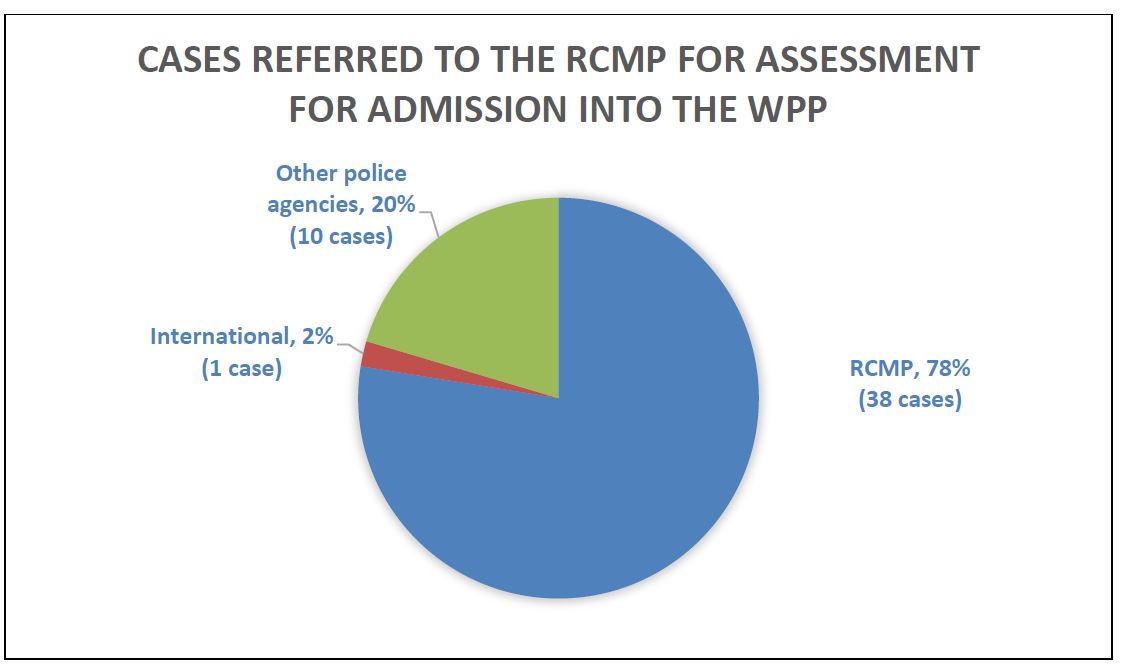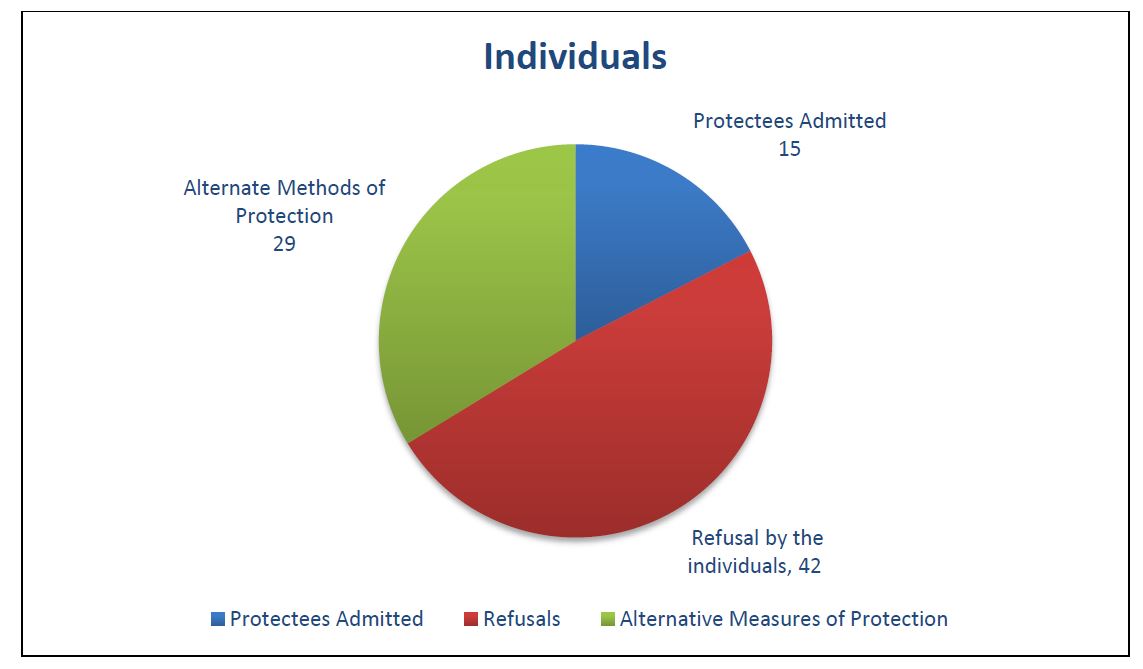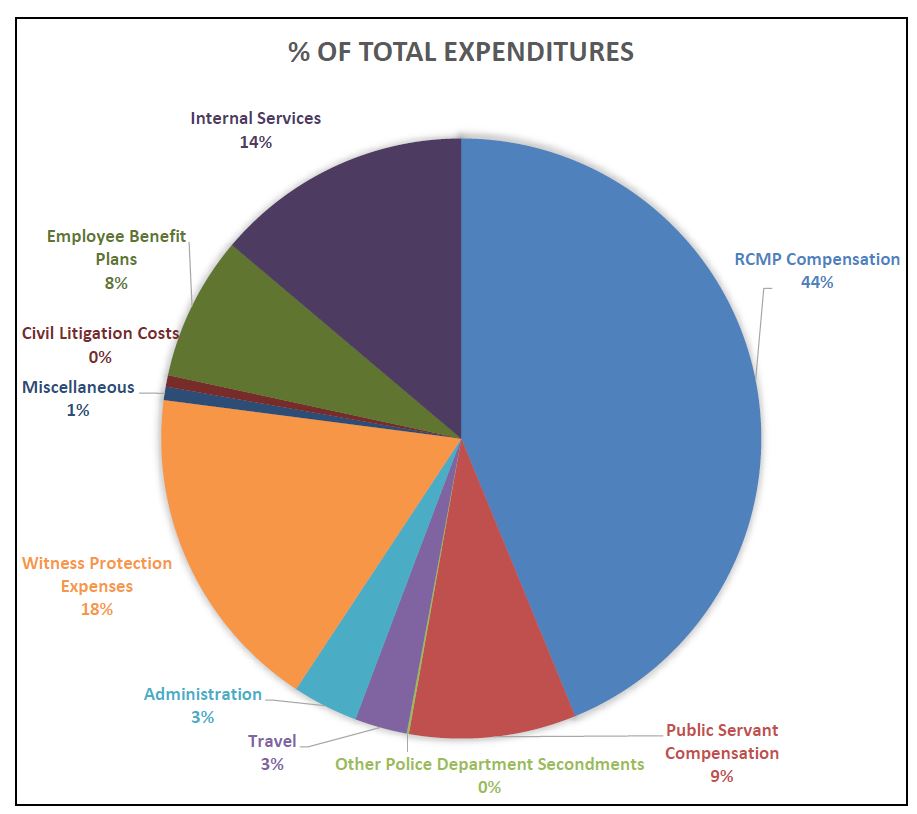Witness Protection Program - Annual report: 2017-2018
Introduction
This is the twenty second annual report on the federal Witness Protection Program (WPP, or Program), as required by section 16 of the Witness Protection Program Act (WPPA or Act).
The WPPA was enacted in 1996, amended in 2014, and gives the Commissioner of the Royal Canadian Mounted Police (RCMP) the responsibility to promote law enforcement, national security, national defense and public safety by facilitating the protection of persons who are at risk of harm due to their assistance on criminal matters, or their relationship with someone who provides such assistance.
The WPP continues to be an effective tool in combatting serious crime. Confident in their protection, witnesses are able to safely provide evidence at trial without fear of retribution.
The statistics included in this report are based on the services provided by the RCMP between April 1, 2017 and March 31, 2018. Protectees include individuals from RCMP cases, individuals referred by other Canadian police services, and foreign protectees under subsection 14(2)Footnote1 of the Act.
To avoid jeopardizing the integrity of the Program, or the safety of staff and any individual within the Program, these statistics have been provided without details concerning individual cases. The report strives to provide as much information as possible to the Canadian public without impacting the effectiveness and security of the Program.
Program Activities
In the 2017-18 reporting period, the WPP assessed 49 casesFootnote2 for admission to the Program, based on section 7 of the WPPA. It is important to note that, while the value of the witness’ participation is one of the factors considered in the admission process, officers investigating the criminal matters to which the protection and assistance of the witness relates, are not involved in the decision and the decision remains independent from the investigation.
The WPP is administered by the RCMP on behalf of the Government of Canada and the Program is available to all law enforcement and security agencies in Canada as well as trusted international law enforcement agencies, with which the Program has entered into a formal agreement. Of the 49 cases referred to the WPP, 38 were from the RCMP, one was from an international partner, and the remainder were from other Canadian police agencies. The percentage breakdown is displayed in Figure 1, below.
Figure 1

Image Description
This graph represents the cases referred to the RCMP for assessment for admission into the Witness Protection Program. 78% (38 cases) were from the RCMP, 20% (10 cases) were from other police agencies and 2% (1 case) international.
Between April 1, 2017 and March 31, 2018, 15 individuals were admitted into the WPP. The number of individuals referred to the WPP for assessment fluctuates each year based on factors beyond the WPP’s control such as law enforcement activities that lead to requests for protection by the WPP.
During this same time period, 29 individuals were given alternate methods of protection and another 42 refused all forms of protection. Alternate methods of protection are normally provided in cases where individuals are found inadmissible or where they refuse to be admitted to the WPP. Reasons for refusal can include the individual’s unwillingness to relocate due to personal reasons, or an objection to the conditions imposed, for example, abstaining from illicit drug use, never returning to the threat area, etc. Although conditions are imposed to ensure the security of protected individuals and Program staff, all individuals enter the Program voluntarily and have the option of refusing admission based on their personal perspectives and preferences, or their perception of the risk to their security.
Figure 2 depicts the number of individuals who were admitted, who refused admission, and who were provided with alternate methods of protection.
Figure 2

Image Description
This graph provides a breakdown of individuals. Between April 1, 2017 and March 31, 2018, 15 individuals were admitted into the WPP, 29 individuals were given alternate forms of protection and 42 refused all forms of protection.
A formal Protection Agreement sets out the basis of participation in the WPP and the obligations of the parties, and is signed by the individual and by the RCMP authority. While individuals are deemed admitted to the Program for life, they may choose to leave it. This is classified as a voluntary termination. Examples of reasons given include a desire to go to an unsafe area or to engage in activities that are prohibited by the WPP.
Conversely, individuals who breach the conditions imposed on them and thus potentially threaten their own safety or the safety of Program staff, may be subject to an involuntary termination of protection if deemed necessary. This decision is made by the Assistant Commissioner who has the delegated authority to both admit individuals into the Program and to terminate the protection provided to them.
Throughout this reporting period, 15 individuals were terminated from the Program, four of which were non-voluntary terminations and 11 of which were voluntary terminations.
Effectiveness of the WPP
The WPP reports that no individual protectees were injured or killed during the reporting period. Operationally, the Program continues to contribute to the overall mandate of a safe and secure Canada through the protection of key witnesses in cases that involve serious criminality.
Sound Program policy and administration is necessary to support the effective operation of the WPP. In the last year, the Program has implemented several enhancements to improve accountability, ensure operations were standards-based, and that all actions were protectee-focused. For example, research capacity was enhanced, which has enabled the Program to access better information to support future initiatives.
Integrity and Accountability
During this reporting period, one case of civil litigation was filed against the WPP. No public complaints were filed.
The WPP inevitably deals with trials given its duty to protect those who testify or assist law enforcement. As such, the WPP is required to disclose materials related to witnesses in trials on a regular basis. Disclosure has been noted as the largest-growing aspect of the WPP, with eight disclosure cases recorded in the 2017-18 fiscal year.
Expenditures
The WPP is administered by the RCMP and funded from within the RCMP budget. A table of costs for the 2017-18 fiscal year is provided in Figure 3 below. It includes wages and benefits for personnel, travel costs, administrative and protectee relocation expenses totaling $12.5M. This total also includes the cost of internal services of $1.7M, which encompasses financial management, legal services, real property services and human resources.
These do not take into consideration expenses incurred by other law enforcement agencies, including other witness protection programs.
Figure 3
| RCMP Expenditures on WPP for 2017/2018 | Amount in Canadian Dollars | % of Total Expenditures |
|---|---|---|
| Compensation | $6,618,090.22 | 53% |
| Other Police Department Secondments | $15,033.50 | 0% |
| Travel | $354,212.24 | 3% |
| Administration | $444,567.23 | 4% |
| Witness Protection Expenses | $2,230,049.61 | 18% |
| Miscellaneous | $90,297.89 | 1% |
| Civil Litigation Costs | $77,697.92 | 1% |
| Employee Benefit Plans | $975,069.00 | 8% |
| Internal Services | $1,736,970.00 | 14% |
| TOTAL | $12,541,987.61 | 100% |
Figure 4

Image Description
This graph provides the breakdown of the RCMP expenditures for 2017/2018 by percentage, including RCMP compensation 44%, Public servant compensation 9%, Other Police department secondments 0%, Travel 3%, Administration 3%, Witness Protection expenses 18%, Miscellaneous 1%, Civil Litigation costs 0%, Employee Benefit Plans 8%, Internal Services 14%.
Salary costs increased in 2017/18 from the previous year. This is due to the deployment of additional staff to the Program, required to build key capacity, essential to ensuring community, staff and protectee safety.
Footnotes
- Date modified: